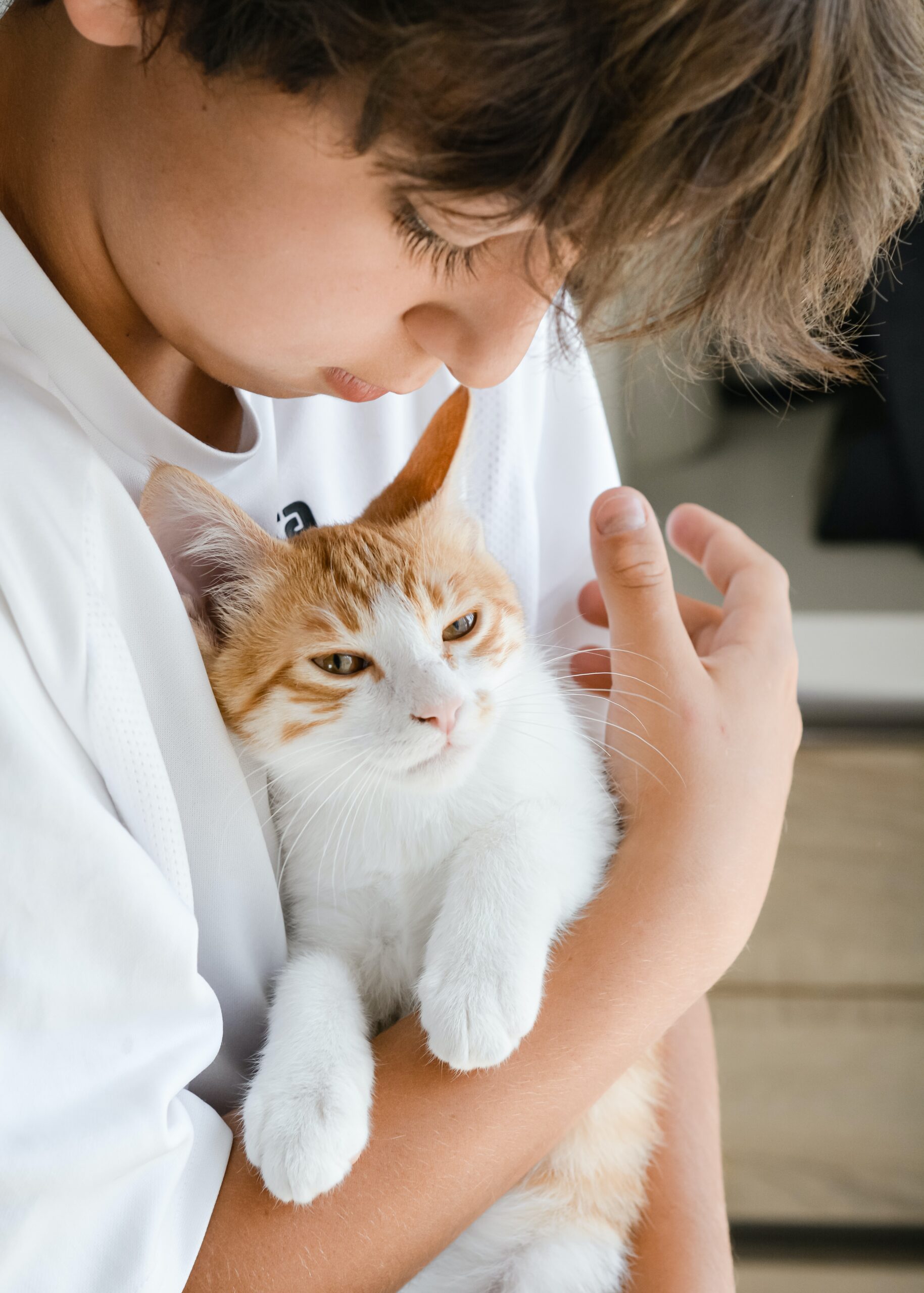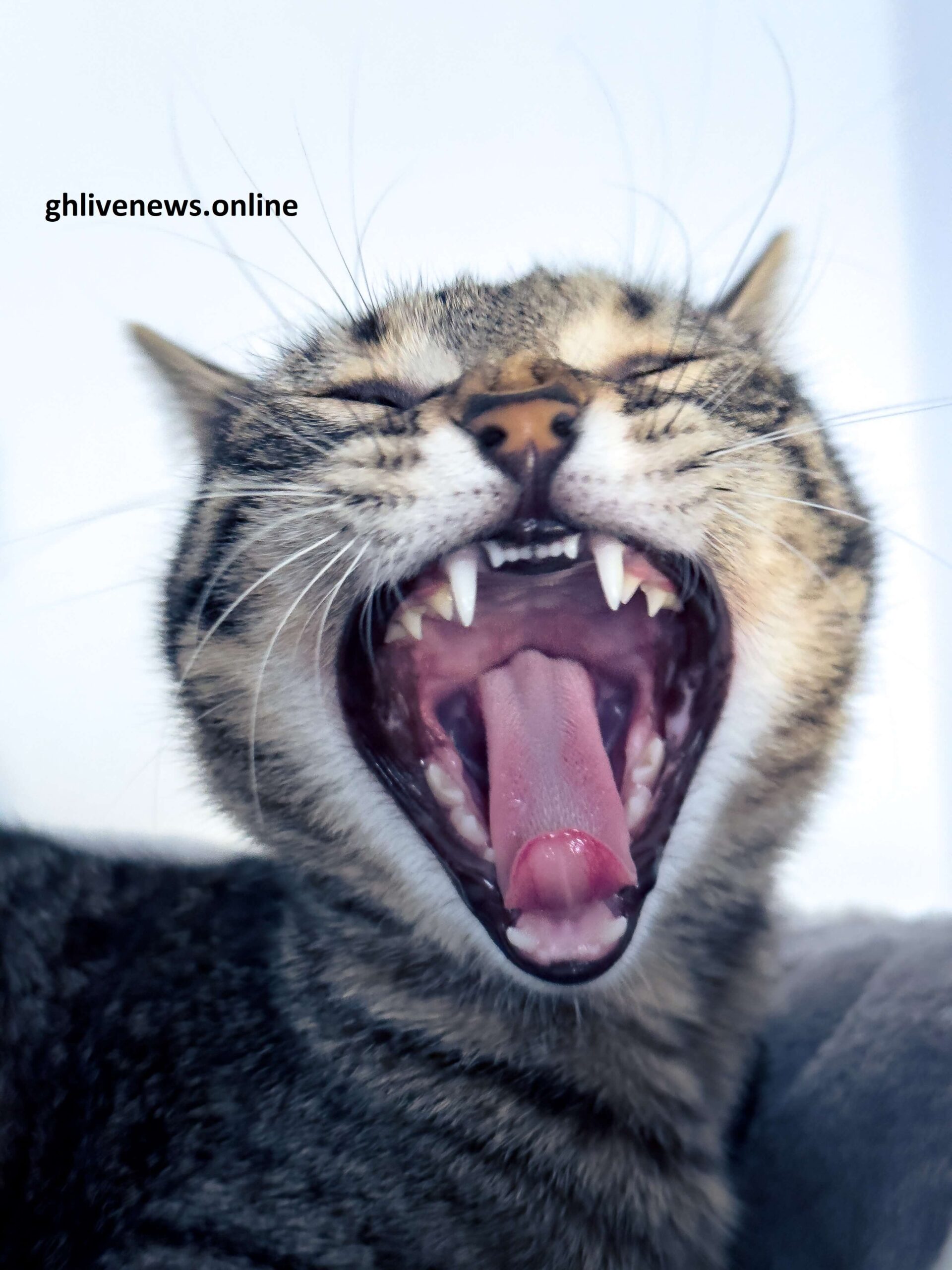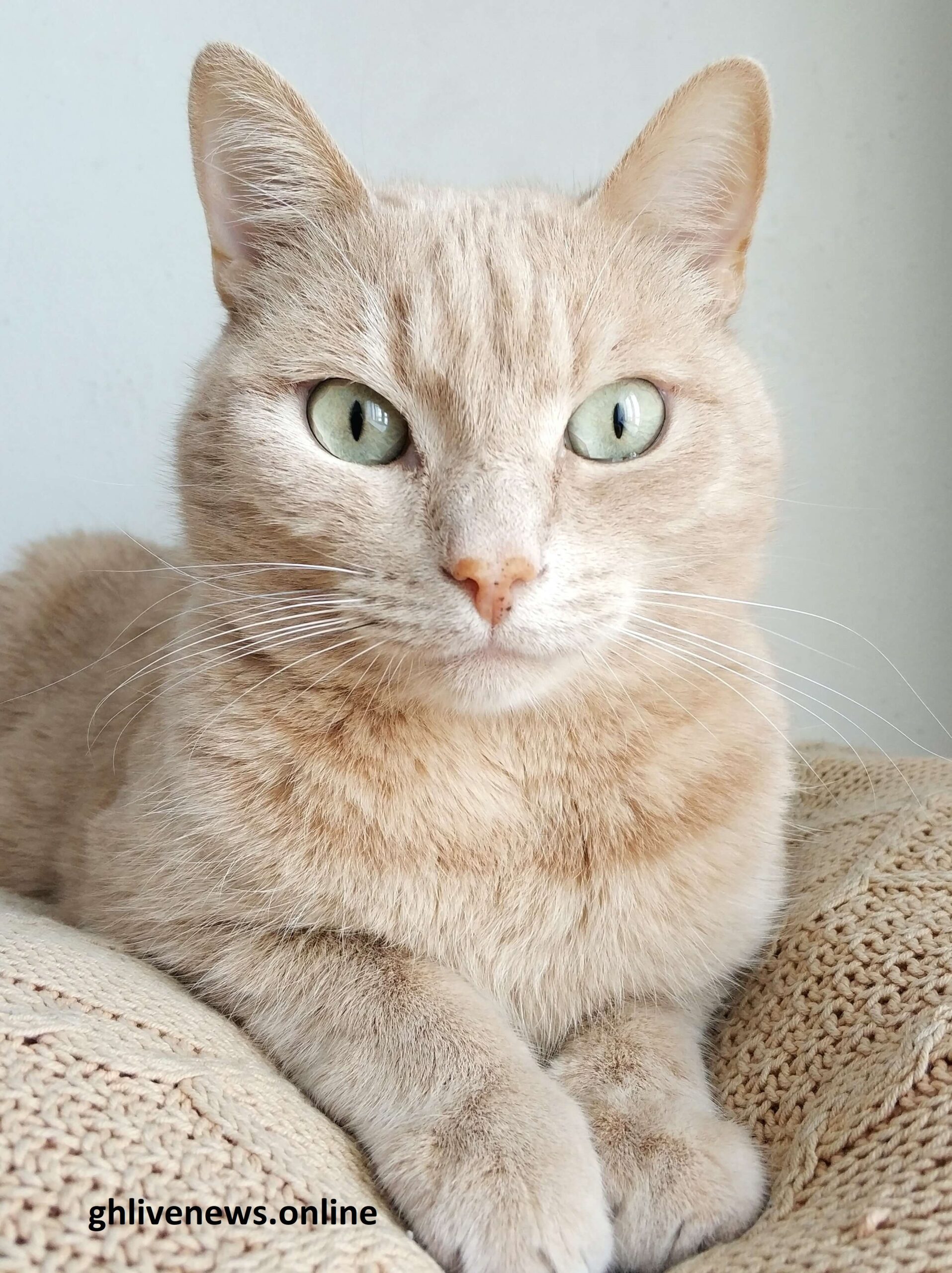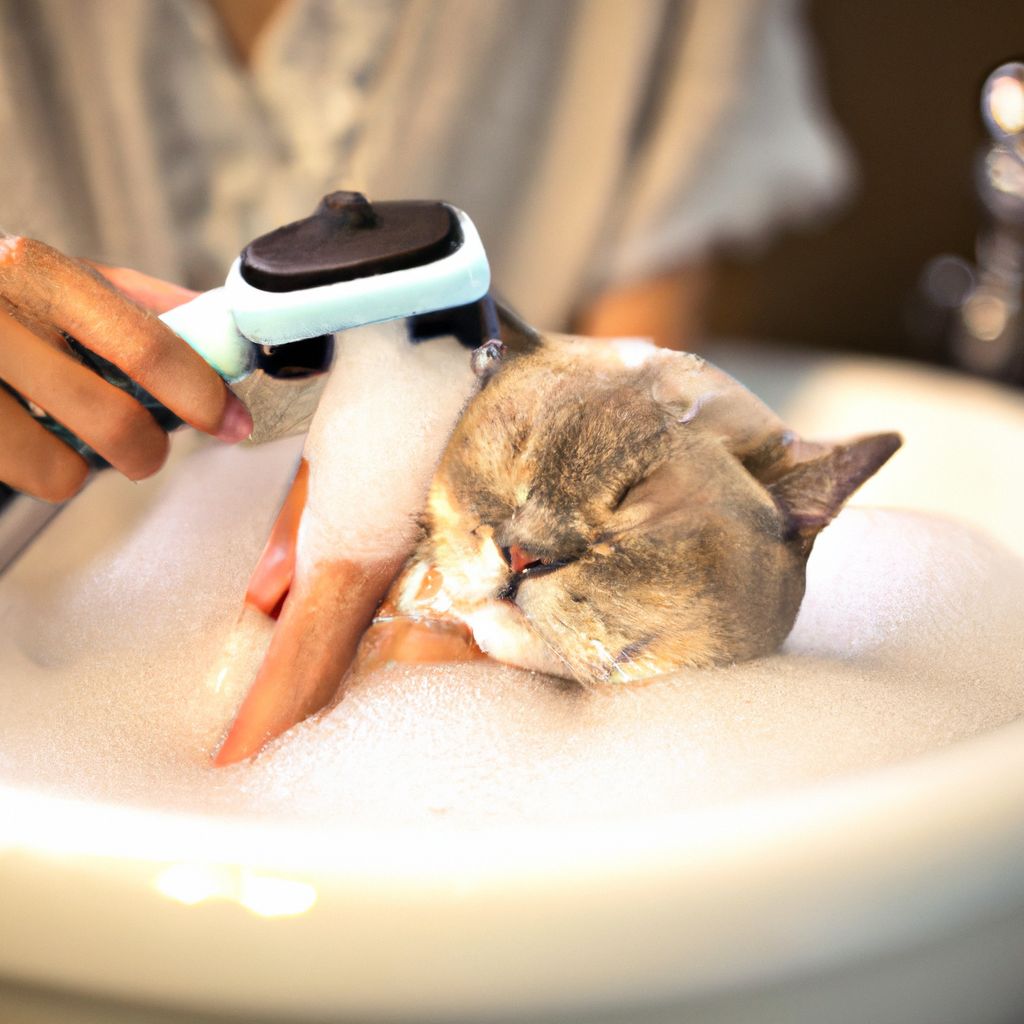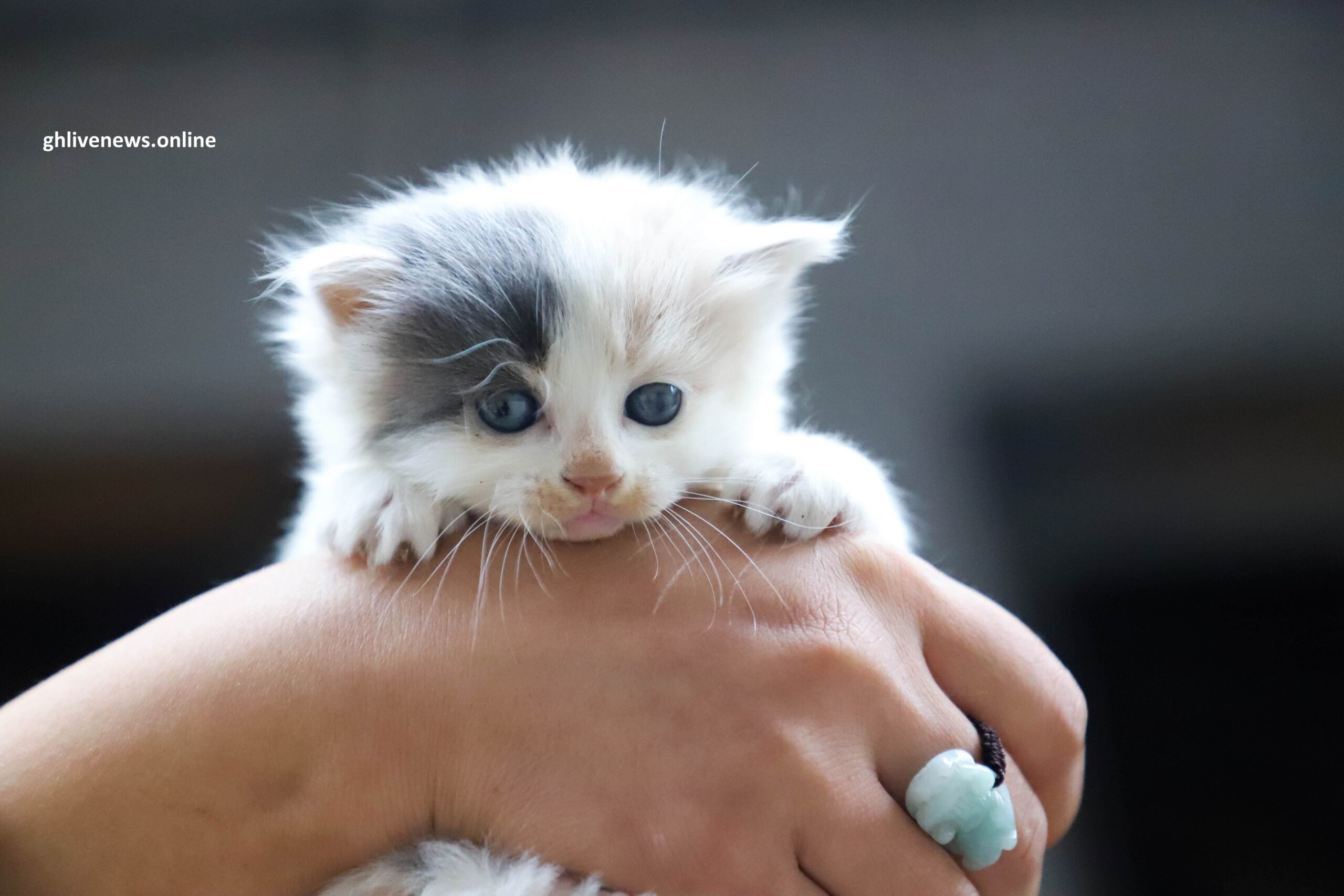.jpg)
Understanding the Importance of a Smooth Integration Process
Integrating a new cat is essential for the well-being of all your animals. So, it’s vital to have a smooth transition. Start by providing separate spaces for each cat. Let them get familiar with each other’s scent, without direct interaction.
Gradually introduce supervised encounters in neutral locations, increasing the duration as they become more comfortable. Monitor their body language for signs of tension or aggression. Positive reinforcement with treats and praise can help establish positive connections.
Ensure each cat has resources such as food bowls, litter boxes, scratching posts, and resting areas. This can prevent resource guarding behaviour and make them feel secure.
A story about Sarah highlights the importance of a smooth integration process. She adopted a playful kitten, Luna, while already having an older cat, Oliver. Without a gradual introduction, tension arose between the two. But, with advice from experts and a structured integration plan, they soon developed a loving bond.
This serves as a reminder that a successful and peaceful integration of a new cat relies on understanding and following the guidelines. Be attentive to their individual needs and you’ll have harmony in your home in no time!
Pre-Integration Preparations
To successfully integrate a new cat into your home, start by making pre-integration preparations. Evaluate your existing cat’s personality and behavior, ensuring a smooth introduction.
Evaluating Your Existing Cat’s Personality and Behavior
Cats have distinct personalities and behaviors that can significantly influence the dynamics of introducing a new cat to a home. Here are a few considerations when evaluating your current cat’s personality and behavior:
- Body Language: Check your cat’s body language to determine their comfort level in different scenarios. Look for signs of tension, like a rigid posture or wide eyes. A calm cat with a loose body posture means they have a confident and easy-going personality.
- Socialization: Take into account your cat’s socialization history. Cats that have been around other animals often tend to be more open to new additions to the family. Conversely, cats with minimal exposure to other animals may require more time and patience during the assimilation process.
- Activity Level: Note your cat’s activity level. Some cats are naturally energetic and playful, while others are more relaxed and prefer a peaceful atmosphere. Matching the energy levels of both cats can help avoid conflicts and ensure a smoother transition.
- Reactivity to Changes: Assess how your cat reacts to changes in their environment. Cats that become easily stressed or anxious may encounter more difficulty in adapting to a new companion. It is essential to create a secure and stable atmosphere before introducing a new cat.
Moreover, think about any unique details specific to your own cat’s personality and behavior that weren’t mentioned already. Comprehending these individual traits will make it easier for you to anticipate any issues or troubles that may arise during the integration process.
Pro Tip: Give each cat their own space initially, letting them interact through scent exchange before actual physical contact. This progressive process aids in creating positive associations between the cats, resulting in a successful integration.
Introducing Scent Exchange: Step 1 of Integration
To successfully integrate a new cat into your home, use the scent exchange technique. By implementing scent exchange, you can help your new cat acclimate to their surroundings and form positive associations. In this section, we will focus on how to implement scent exchange effectively, allowing for a smoother transition and a harmonious introduction between your new cat and existing pets.
How to Implement Scent Exchange
Ready to implement Scent Exchange? Here’s a 4-step guide to help you get started:
- Set up the environment:
- Designate an area for scent exchange.
- Follow proper ventilation guidelines.
- Gather necessary tools and materials.
- Choose suitable scents:
- Pick scents that fit the atmosphere.
- Take into account preferences and sensitivities.
- Opt for high-quality scents.
- Introduce scents gradually:
- Start with subtle scents in common areas.
- Gauge user response and comfort level.
- Increase intensity and coverage as needed.
- Collect feedback and adapt:
- Gather feedback from users.
- Analyze data to identify patterns.
- Make adjustments based on feedback.
Plus, make sure all scents used are safe and non-allergenic.
Now, here’s a story. In a city coffee shop, they decided to try scent exchange. They chose fragrances to complement the smell of fresh coffee. Customers loved it, and stayed longer to chat and make new connections. Scent exchange transformed the humble coffee shop.
So, use scent exchange to create memorable experiences. Get ready to see integration in a whole new light with Visual Interaction: Step 2. It’s like Pictionary but with more pixels!
Introducing Visual Interaction: Step 2 of Integration
To seamlessly integrate your new cat into your home, follow these tips for successful visual interaction. Manage visual introduction sessions to ensure a smooth transition and harmonious coexistence between your resident cat and the newcomer.
Managing Visual Introduction Sessions
Structure is essential for effective visual introduction sessions. Create a table with information such as the purpose, target audience, duration, and any prerequisites or preparation. This provides clarity and makes understanding easier.
Interactive activities and exercises help participants learn and remember. These can range from tutorials to group discussions.
Here’s an example of what can go wrong: A software company had a visual introduction session for a new product update. Poor management and unclear instructions led to confusion and dissatisfaction with the product, resulting in negative feedback and lost business.
It’s clear how important it is to manage visual introduction sessions well.
- Step 3: Introducing Physical Interaction. Take integration to the next level.
Introducing Physical Interaction: Step 3 of Integration
To ensure a successful integration of a new cat into your home, physical interaction plays a crucial role. In step 3, “Introducing Physical Interaction,” we will discuss how to supervise and guide initial interactions. These techniques will help establish a positive relationship between your resident cat and the new addition, fostering a harmonious household.
Supervising and Guiding Initial Interactions
Supervising and guiding initial interactions are key for a successful physical integration. Training users, providing clear instructions, and using visual cues are great strategies to ensure a smooth transition.
We can also implement a feedback mechanism to inform users when their interactions are successful. Plus, breaking down complex interactions into smaller steps can make learning easier.
These measures will help users become familiar with the physical aspects of the system, allowing for more enjoyable experiences during initial interactions.
Identifying and Addressing Potential Challenges
To address potential challenges when introducing a new cat to your home, rely on strategies that tackle common issues during integration. By understanding and proactively addressing these challenges, you can set the stage for a successful integration process.
Common Issues During Integration
Integration issues can pose a challenge and need to be identified and tackled. Let’s explore the common issues:
- Data incompatibility can be a major issue. When data structures are different, combining information can become difficult.
- Poor communication between teams can lead to misunderstandings and delays.
- Software compatibility is key for a successful integration process. When merging systems, they must be compatible.
- Time constraints add pressure and complexity.
To handle these issues, we suggest:
- Analyzing data before integration.
- Setting up clear communication between teams.
- Having regular meetings and progress updates.
- Allocating sufficient resources and personnel.
By doing this, organizations can better face the integration challenges.
Ensuring a Safe and Harmonious Living Environment
To ensure a safe and harmonious living environment when introducing a new cat to your home, provide ample resources for each cat. This includes establishing separate feeding areas, providing multiple litter boxes, and creating comfortable resting spots. By meeting the individual needs of each cat, you can promote a smooth integration and minimize potential conflicts.
Providing Ample Resources for Each Cat
Cats require various resources for their physical and mental well-being. Meeting these needs is key in keeping an environment safe and peaceful for them.
To meet each cat’s needs, it’s important to consider their individual preferences. This could involve providing litter boxes, scratching posts, hiding spots, toys, and feeding stations. These should be strategically placed around the living space. This gives cats the chance to engage in natural behavior and access their essentials.
Cat owners can create a stimulating environment by having an area for each resource. Litter boxes can be placed in quiet corners away from the food and water bowls. Multiple scratching posts in different areas of the house can aid in preventing furniture damage. Shelves or cat trees offer vertical space for climbing and perching. Toys and interactive playtime sessions can stimulate their minds.
Moreover, each cat may have different preferences when it comes to resources. One may prefer a covered litter box, while another may favor an open one. By observing each cat’s behavior and preferences, owners can make adjustments to make sure all their needs are met.
The story of Whiskers serves as a reminder of the positive impact providing resources can have on a cat’s behavior and happiness. Whiskers was constantly knocking things off shelves due to lack of vertical space until wall-mounted shelves and a tall cat tree were provided.
It is important to provide sufficient resources tailored to individual cat preferences. This ensures a stimulating environment that promotes physical and mental stimulation. Observing each cat’s behavior allows owners to make the necessary changes for optimal satisfaction.
Monitoring and Gradual Integration Progress
To ensure a successful integration when introducing a new cat to your home, monitoring and gradual integration progress is key. Keep an eye out for signs of successful integration as indicators of positive outcomes during the process.
Signs of Successful Integration
Text:
Successful integration is shown by various signs. Monitor them to gauge the process’s progress and effectiveness. Let’s look at the table below to understand the signs of a successful integration.
| Signs | Description | Status |
| Cultural Alignment | Shared values, behaviors, and norms among employees. | True |
| Collaboration | Increase in cross-team cooperation and joint decision-making. | True |
| Efficiency Gain | Improvement in operational productivity and cost reduction. | True |
These are just a few. Every organization may have unique ones. Also, check employee satisfaction, customer feedback, and financial performance. Analyze these aspects and the signs to get a comprehensive picture.
Pro Tip: Communicate with employees to ensure their voices are heard. Their insights and feedback can be very helpful.
Troubleshooting – When progress is stuck, even the best spies need a tech support hotline.
Troubleshooting and Seeking Professional Help
Integrating cats can be difficult. Here are some tips:
- Observe their behavior
- Make gradual introductions
- Consult experts
- Use socialization techniques
- Provide a safe space
Be patient and persistent. Tailor approaches to your cats’ unique personalities.
Lisa’s story illustrates this. She adopted a new cat, but he was anxious and unwilling to interact with her resident cat. With expert help, he eventually felt safe and at home.
Troubleshoot and seek professional advice! Create harmony for your cats. Cheers to a perfect blend!
Conclusion: Celebrating Successful Integration
Integrating a new cat can seem intimidating, but with the right guidance and patience, it can be done. Here are tips for achieving a harmonious home for both your cats.
- Provide the new cat with their own space. This gives them security to adjust to their new home. Gradually let them explore more areas of the house to prevent overwhelming them.
- Establishing a routine is key. Cats love consistency. Schedule feeding, playtime and social interaction. Give each cat individual attention to show they’re loved.
- Assess the cats’ unique needs. Some need extra time due to past experiences. Tailor your approach to their personalities and histories.
- Milo and Luna are an inspiring example of successful integration. Milo was a solo cat for years before Luna was adopted. Initially, he was hesitant, but with gentle introduction and positive reinforcement, they now happily coexist. Patience and understanding are essential for successful integration.
Frequently Asked Questions
Frequently Asked Questions
Q: How do I introduce a new cat to my home?
A: Introducing a new cat to your home should be done gradually. Start by keeping the new cat in a separate room with all the necessary supplies, and gradually allow supervised interactions with any existing pets. This helps them get used to each other’s scents and presence before full integration.
Q: How long does it take for cats to adjust to a new home?
A: Every cat is different, but it usually takes a few weeks for a new cat to fully adjust to a new home. Patience and a calm environment are crucial during this period. Provide a safe space, regular meals, and plenty of playtime to help your new cat feel more comfortable and secure.
Q: Should I get a male or female cat if I already have one?
A: The gender of the new cat doesn’t necessarily determine successful integration. It is more important to consider the personalities and temperaments of both cats. Some cats may get along better with the opposite gender, while others prefer the same gender. Proper introductions and monitoring their behaviors are key in any case.
Q: How do I prevent territorial issues between cats?
A: Territorial issues can be minimized by providing each cat with enough personal space, resources, and separate feeding areas. Gradually introduce them and make sure to supervise all interactions. Use positive reinforcement, such as treats, to reward good behavior and encourage a harmonious environment.
Q: What signs indicate that the cats are getting along?
A: Signs of positive interaction between cats include relaxed body language, grooming each other, and playful behavior. They may sleep or eat together peacefully. However, it’s important to note that some cats naturally prefer to keep their distance, even if they have a peaceful relationship.
Q: What should I do if the cats are not getting along?
A: If the cats are not getting along, it’s important to assess the situation and consult a veterinarian or animal behaviorist for guidance. They can provide specific advice based on the cats’ behaviors and suggest strategies to promote a more harmonious relationship, such as gradual reintroductions or implementing environmental enrichment techniques.
Originally posted 2023-07-02 00:26:03.
